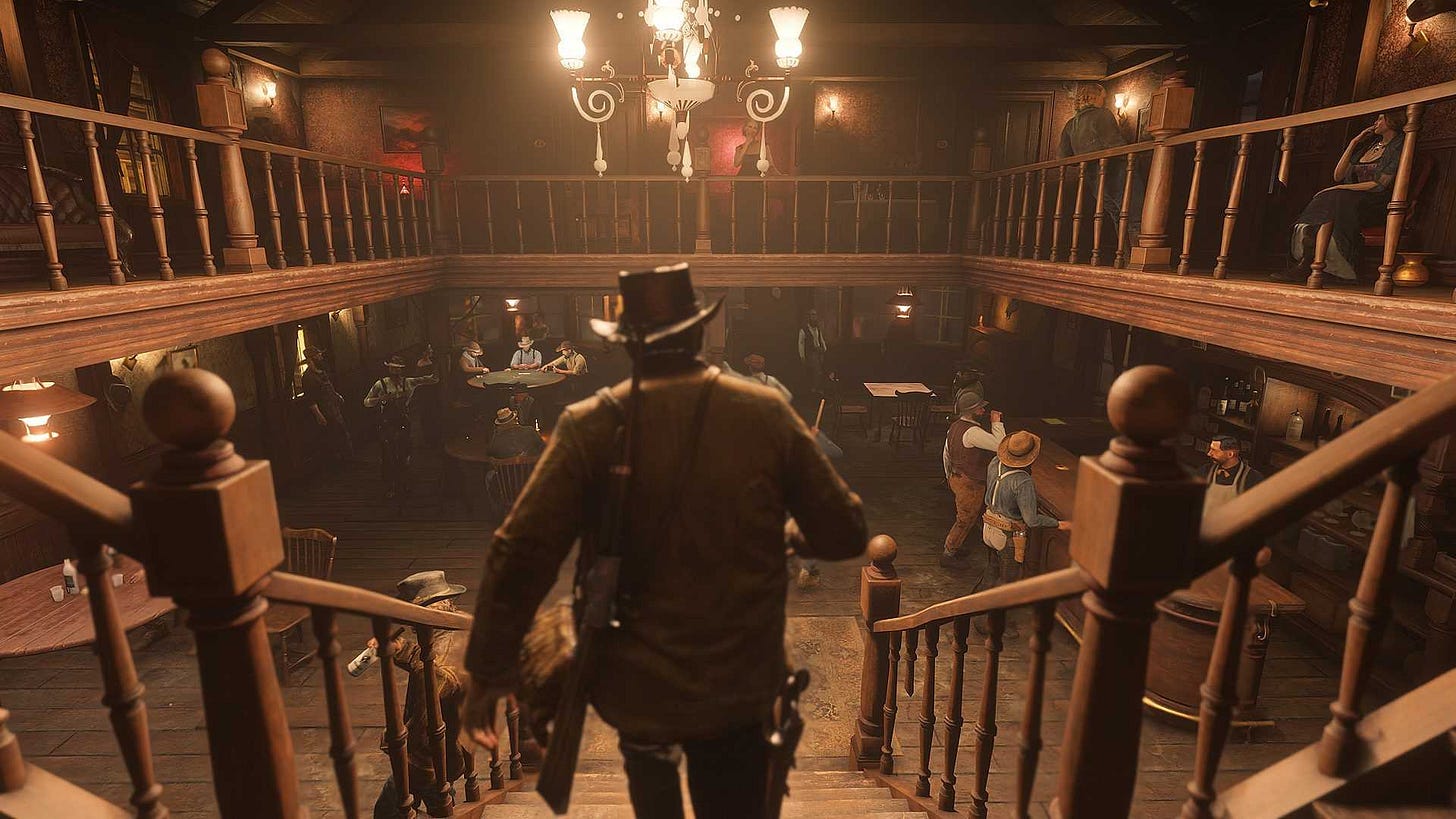Imagine walking into a bookstore with no signs, no labels, and no clear sections.
You'd be overwhelmed by the sheer number of books, with no idea where to start or how to find what you're looking for. This is what the video game industry would be like without genres and categorization.
But have you ever stopped to think about how games are categorized, and why it matters?

As gamers, we've all been there - scrolling through online stores, browsing through game reviews, and trying to make sense of the countless genres and sub-genres that seem to pop up every year. But behind the scenes, game developers, publishers, and marketers are constantly debating the best way to categorize games. It's a debate that's been raging for decades, and one that has a significant impact on the games we play and the industry as a whole.
So, why does categorization matter?
For one, it helps us make sense of the vast array of games out there. With thousands of new titles released every year, it's impossible to keep track of everything. Genres and categories provide a framework for understanding what a game is about, what kind of experience it offers, and who it's likely to appeal to.
But categorization is more than just a practical tool - it's also a reflection of our deeper understanding of games as a medium. By grouping games into categories and genres, we're making implicit statements about what games are, what they can do, and what they're capable of.
In this article, we'll delve into the world of video game genres and categorization, exploring the history, the benefits, and the challenges of this complex and often contentious topic. We'll examine the ways in which categorization shapes our understanding of games, and how it influences the way we experience them. And we'll ask the question: what does the future of categorization hold for the gaming industry?
Genres and Categories
I might use them interchangeably at times, but to some, genres and categories refer to slightly different concepts:
Genre typically refers to a more specific classification based on gameplay mechanics, interaction styles, and core features. For example, "first-person shooter," "puzzle-platformer," or "survival horror" are genres that describe particular gameplay experiences. A genre can be further divided into subgenres.Category, on the other hand, often represents a broader, higher-level grouping of games. Categories can encompass multiple genres and are usually more general in nature. For instance, "Action," "Adventure," or "Sports" are categories that can include various genres within themJust so you know.
A Brief History of Video Game Genres
The concept of video game genres has been around for almost as long as the industry itself. In the early days of gaming, genres were simple and straightforward - think "Space Invaders" (1978) for shooters, "Pac-Man" (1980) for arcade games, and "Ultima IV" (1985) for role-playing games.

As the industry grew and evolved, so did the genres. The 1990s saw the rise of 3D gaming, with titles like "Super Mario 64" (1996) and "The Legend of Zelda: Ocarina of Time" (1998) pushing the boundaries of what was possible. This was also the era when genres started to blend together, with games like "Castlevania: Symphony of the Night" (1997) combining elements of action, adventure, and role-playing.
The 2000s brought us the dawn of online gaming, with massively multiplayer online games (MMOs) like "World of Warcraft" (2004) and "Guild Wars" (2005) changing the way we play with others. However, "Online Mulitplayer" was not a useful genre, as many games have since incorporated online multiplayer elements.
This was also the era when indie games started to make a name for themselves, with titles like "Braid" (2008) and "Minecraft" (2011) showing that small studios could create big hits. Minecraft, and the company behind it, Mojang, were bought by Microsoft in 2014 for $2.5 billion (with a b).

Throughout the history of video game genres, one thing has remained constant - innovation. Game developers have always pushed the boundaries of what's possible, experimenting with new mechanics, art styles, and storytelling techniques.
And as the industry continues to evolve, it's exciting to think about what the future of genres might hold. Will we see new genres emerge, or will existing ones continue to evolve and adapt? One thing's for sure - the world of video game genres is always changing, and it's an exciting time to be a gamer.
The Power of Categorization
Categorization is a powerful tool in the gaming industry, shaping the way we think about games, the way we market them, and the way we play them. At its core, categorization is about creating a shared understanding of what a game is and what it offers. This shared understanding is crucial for game developers, marketers, and players alike.
For game developers, categorization helps to define the scope and direction of a project. By identifying a game's genre and category, developers can determine the types of gameplay mechanics, art styles, and narrative themes that are most relevant to the project. This helps to ensure that the game is cohesive and engaging, and that it meets the expectations of its target audience.
For marketers, categorization is essential for reaching the right audience and generating buzz around a game. By labeling a game as a "first-person shooter" or a "role-playing game," marketers can target specific demographics and fan communities, and create a sense of anticipation and excitement around the game's release.
Categories as a Theoretical Concept
But categorization is not just a practical tool - it's also a theoretical concept that has been explored by game scholars and critics. One of the key ideas in this area is the concept of "genre as contract", which suggests that genres are not just labels, but rather a set of expectations and promises that are made to the player. When a game is labeled as a "horror game," for example, the player expects a certain type of experience - one that is scary, intense, and perhaps even disturbing.
Games that have benefited from effective categorization include titles like "Portal" and "Bioshock," which have used their genre labels to create a sense of anticipation and expectation around their gameplay mechanics and narrative themes. On the other hand, games that have struggled due to poor categorization include titles like "No Man's Sky," which was marketed as a sci-fi exploration game but struggled to deliver on its promises.

So, what can we learn from the power of categorization? For one, it's a reminder that genres are not just labels, but a way of communicating with players and setting expectations. By understanding how genres work, game developers can create experiences that are both innovative and true to their roots. And for players, it's a chance to explore new worlds and experiences, knowing what to expect from a game and what kind of fun they'll have. Whether you're a developer or a player, categorization is a powerful tool that can help us appreciate the art of game design in a whole new way.
Beyond Genres: The Rise of Hybrid Games
In recent years, we've seen a growing trend of games that blend elements from multiple genres, creating something entirely new and innovative. These hybrid games are changing the way we think about categorization, and challenging our traditional notions of what a game should be.
One of the most iconic examples of a hybrid game is Portal, which combines elements of first-person shooters, puzzle games, and platformers to create a unique and engaging experience. That was a thrilling and surprising mix of genres that many players hadn’t seen before when it released in 2007. Another example is Minecraft, which blends elements of sandbox games, survival games, and creative building games to create a game that is both relaxing and challenging.

These hybrid games are not only successful, but they're also pushing the boundaries of what we consider a "genre." They're showing us that games don't have to fit neatly into one category, and that the best experiences often come from combining different elements in new and innovative ways.
But hybrid games are not without their challenges. One of the biggest challenges is marketing and categorization. When a game doesn't fit neatly into one genre, it can be difficult to market and promote. How do you describe a game that is both a first-person shooter and a puzzle game? How do you reach the right audience and generate buzz around a game that defies traditional categorization?
Despite these challenges, hybrid games are becoming increasingly popular, and they're changing the way we think about genres and categorization. They're showing us that games don't have to be limited by traditional genre boundaries, and that the best experiences often come from combining different elements in new and innovative ways.
AI and The Future of Categorization
As the gaming industry continues to evolve, it's likely that categorization will play an increasingly important role. Emerging technologies like artificial intelligence (AI) and machine learning (ML) are already being used to develop new categorization approaches, such as AI-driven genre classification.
Researchers have developed deep learning models for video game genre classification using both image-based and text-based approaches. These models analyze game covers, descriptions, and titles to predict genres.
But why?
One potential benefit of AI-driven genre classification is that it could help to create more nuanced and accurate categorizations. By analyzing large datasets of game metadata, AI algorithms can identify patterns and relationships that human categorizers might miss. This will lead to more precise and informative categorizations, which helps players to find games that are a better fit for their interests. Although it also adds a level of uncertainty for publishers, who are used to call the shots when it comes to categorizing their products.
However, there are also potential challenges to consider. For example, AI-driven genre classification could lead to a lack of transparency and accountability in the categorization process. If AI algorithms are making decisions about how games are categorized, it may be difficult for players to understand why certain games are being classified in certain ways. On top of that, AI models may perpetuate biases in their categorizations, leading to unwanted outcomes.
Despite these challenges, many key players in the gaming industry are already exploring the potential of AI-driven genre classification. For example, the game development platform, Unity, has developed an AI-powered game categorization tool that uses machine learning algorithms to analyze game metadata and identify patterns and relationships.
AI Everywhere
And let’s not forget: the gaming industry is not new to AI. As usual, gaming is at the forefront of innovation. Big titles have incorporated AI elements in their games for many years, and with the current AI boom, that trend is only set to increase.

Conclusion
As we've explored the world of video game genres and categorization, it's clear that there’s a little more to it than we might have initially thought.
From the early days of arcade games to the modern era of hybrid games, categorization has played a crucial role in shaping our understanding of games and our expectations of them.
But categorization is not just a practical tool - it's also a reflection of our deeper understanding of games as a medium. By examining how games are categorized and how those categories evolve over time, we can gain insights into the cultural and historical contexts in which they were created.

So, what do you think about video game genres and categorization? Do you think they're helpful or limiting? Do you have a favorite game that defies categorization? Please leave a comment below to share your thoughts.




